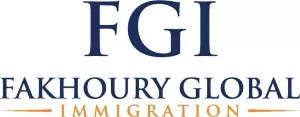- within Immigration topic(s)
- in United States
- with readers working within the Healthcare and Technology industries
- within Immigration topic(s)
- in United States
On August 28, 2025, the Department of Homeland Security proposed a rule in the Federal Register titled "Establishing a Fixed Time Period of Admission and an Extension of Stay Procedure for Nonimmigrant Academic Students, Exchange Visitors, and Representatives of Foreign Information Media" (DHS Docket No. ICEB-2025-0001). On its face, the rule seeks to tighten oversight of F and J visa holders by replacing the flexible "duration of status" policy with rigid fixed admission periods. In reality, it is a dangerous step backward for the United States that threatens to undermine higher education, economic competitiveness, and America's global standing.
The proposed rule would establish a fixed four-year period for F-1 and J-1 visa holders. International students who are currently in the U.S. will be allowed to remain in duration of status but cannot exceed four years from the date the rule becomes final without seeking an extension of status, or EOS. The same will apply to J-1 exchange visitors.The new rule will also bar F-1 students from transferring into another program within the first academic year of the program.
Why Duration of Status Works
For decades, the United States has built its reputation as the world's top destination for higher education by welcoming talented students and researchers who enrich classrooms, power laboratories, and strengthen the economy. The genius of the duration of status model is its practicality. Students remain in the country as long as they are enrolled full-time and making academic progress, with universities, not immigration officers, responsible for oversight. It recognizes that education does not follow a one-size-fits-all timeline.
A bachelor's degree may take four and a half years, a doctorate can stretch close to eight, and medical residencies or joint degrees often extend even longer. Under the proposed rule, students pursuing such programs would be forced to file repeated extension requests, jumping through bureaucratic hoops just to continue their studies. At best, it creates needless red tape. At worst, it derails the dreams of young people who came here in good faith, believing America welcomed their ambition.
Threats to OPT, STEM OPT, and CPT
The consequences extend beyond classrooms into professional opportunities. International students choose the United States in large part because of programs like Optional Practical Training, STEM OPT, and Curricular Practical Training, which allow them to gain real-world experience tied to their studies. Under the current system, OPT and STEM OPT are part of F-1 status. Students apply for work authorization but do not need to extend their visa to participate.
The new rule changes that entirely. Students would need to secure not only work authorization but also an Extension of Stay to remain eligible. Those already on OPT or STEM OPT before the rule takes effect would be exempt, but new applicants would face additional filings, costs, and delays. For STEM graduates, the 24-month extension that makes American universities so attractive would require yet another round of uncertain applications. CPT would also be at risk, since internships extending beyond the cap could require extensions, throwing into question programs that integrate academic and professional training. Employers, wary of delays and denials, may simply decide not to hire international graduates.
New Restrictions on Student Flexibility
The proposed rule would also severely limit student mobility and academic freedom. International students would no longer be able to change majors, programs, or educational levels within the first academic year unless a narrow exception is granted. Graduate students would face even stricter restrictions on changing programs at all. The rule also bars students from starting a new degree at the same or lower level, a common path for those seeking a second bachelor's or master's in a different field.
Exceptions for extensions of stay are similarly narrow. Students could qualify only for compelling academic reasons such as a change in research topic, for documented medical conditions, or for circumstances outside their control like a natural disaster or pandemic. Struggling academically would not be a valid reason, even though American higher education is built on the principle of second chances.
Bad Data and Discrimination
The proposed two- or four-year limit also sends a chilling message that the United States does not trust the very students it seeks to recruit. It would place immigration officers, not educators, in the position of deciding whether a student is making sufficient academic progress, undermining institutional autonomy and ignoring the expertise of universities. Even more troubling, the policy rests on flawed DHS overstay data that counts students who lawfully changed status or whose departures were not recorded as violators. Using bad statistics to justify a sweeping policy is not sound governance. It is reckless.
The discriminatory implications compound the damage. Students from nearly 60 countries, half of them in Africa, would automatically be restricted to two years regardless of their academic plans or personal circumstances. Even refugees who fled oppressive regimes as children could be penalized simply because of their birthplace. By embedding bias into immigration policy, the rule undermines America's claim to fairness and equal opportunity. At a time when the U.S. should be building bridges, this policy slams the door on entire regions of the world.
The Worst Possible Timing
The timing could not be more misguided. In the midst of a global pandemic, international students have faced extraordinary uncertainty. They have made enormous financial and personal sacrifices, only to be confronted with the prospect of mid-course disruptions and arbitrary limits. Meanwhile, competitor nations such as Canada, the United Kingdom, and Australia have gone in the opposite direction, making it easier for international students to study and work there. The message is clear: while others welcome global talent, America is pushing it away.
Economic and Strategic Losses
The consequences will be profound. International students contribute more than $41 billion annually to the U.S. economy and support over 458,000 jobs. They drive innovation, bolster research, and enrich communities nationwide. They are not a threat to national security. They are an asset to national strength. Yet under this rule, fewer will choose America. They will take their ideas, their energy, and their futures to countries that treat them with respect and provide certainty. The loss will not be theirs. It will be ours. In fact, U.S. Customs and Border Protection'sdata for July 2025 showed a significant decline in the arrival of international students compared to the same period a year earlier, including a drop of almost 50% for students from India.
A Solution in Search of a Problem
DHS justifies the rule in part by citing national security, pointing to a handful of cases involving J-1 visa holders. But sweeping changes that burden millions to address a handful of incidents are not targeted solutions. DHS already has the authority to investigate and monitor individuals of concern through the Student and Exchange Visitor Information System (SEVIS). SEVIS provides real-time tracking and rigorous oversight. Instead of strengthening this proven system, DHS is proposing costly, unnecessary bureaucracy. It is a solution in search of a problem, and in the process it creates new ones that threaten America's global standing.
America Must Choose Openness
If America is serious about maintaining its leadership in higher education, research, and innovation, this rule must be withdrawn. The country's strength has always come from its openness to new people and new ideas. By imposing arbitrary time limits on international students, the U.S. is telling the world's brightest minds to take their talents elsewhere. That is not just bad policy. It is self-sabotage. And if the U.S. wants to remain a beacon of opportunity and innovation, it must choose inclusivity over exclusion and vision over fear. Anything less is a betrayal of what American higher education, and America itself, stands for.
Comments to the proposed rule are being accepted through September 29, 2025, via the Federal eRulemaking Portal: https://www.regulations.gov. Please include Docket No. ICEB-2025-0001 in your comments.
The content of this article is intended to provide a general guide to the subject matter. Specialist advice should be sought about your specific circumstances.


